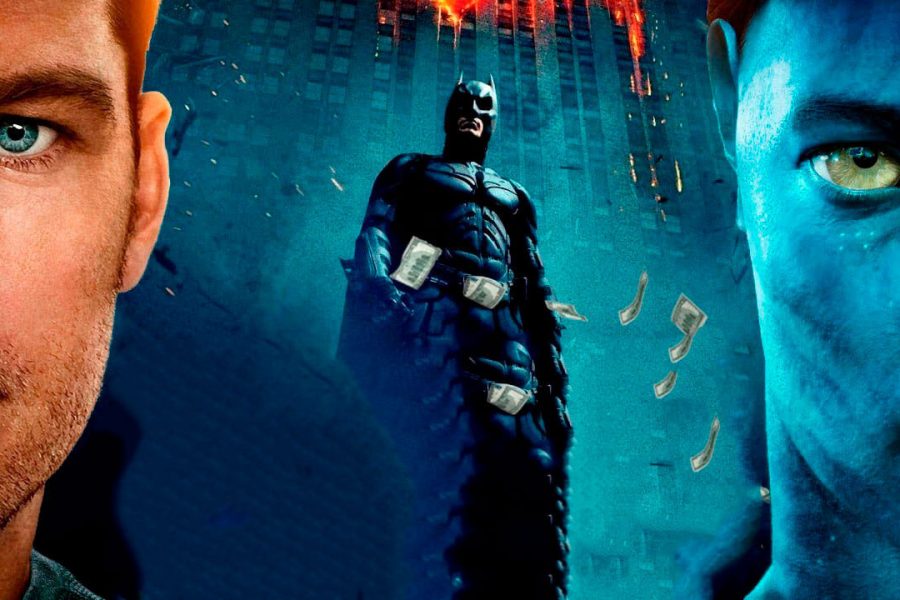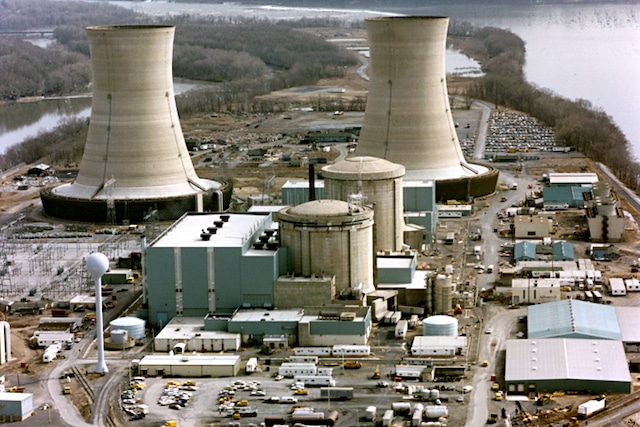During World War II, the U.S. government teamed up with two other powerhouses of public opinion, Hollywood and Madison Avenue, to support the war effort. Propaganda flowed through both industries until it permeated everyday American life. In Britain, Churchill’s stirring rhetoric stirred patriotic sentiments that touched English-speaking peoples on both sides of the Atlantic. In newsreels, films, radio broadcasts, newspaper and magazine articles, information about the war crowded out all other news and entertainment.
As a result, inaccuracies and misinformation entered the public consciousness, where they have remained ever since. Information intended to boost morale gradually became accepted as fact, despite its inherent inaccuracies dictated by the conditions of war. Many of them remain in the public consciousness, even though they have long been debunked. Fighting Hollywood when trying to correct the historical record has never been easy. Here are 10 myths about World War II created or long perpetuated by the entertainment industry.
10. The Americans sincerely supported rationing in the rear.

American life during World War II is portrayed in films and television as one of unity and unflagging support for the troops and government fighting the war. Often these are portrayed humorously, with films using the housing shortage to create romantic comedies. Consequences of rationing , if they occur at all, are seen as mere inconveniences. According to the film, Americans stoically and even enthusiastically supported rationing as a voluntary contribution to the war effort.
In fact, rationing caused discontent almost everywhere and was widely undermined by black markets , which flourished during the war. Hundreds of products were rationed during the war, and food stamps and prices changed frequently. Americans resented having to budget for both food stamps and cash to buy goods they believed were widely available. Among the items most widely purchased on black markets or with counterfeit stamps were meat, sugar, and gasoline.
One enterprising journalist in just a few hours bought more than a ton black market beef within a 30-mile radius of Pittsburgh. During the war, the government issued numerous posters denouncing the black market and urging Americans to refuse to patronize merchants who cheated the system. Their existence and the Office of Price Administration's (OPA) efforts to suppress the black market and rationing fraud throughout the war serve as a vivid testimony to the widespread resistance to rationing in America during the war.
9. Germany had a highly mechanized army that crushed the Allies early in the war.

The perception that emerged in the media in the early days of the war was that the German army was heavily outnumbered mechanized, armored, ruthless force, remains an aspect of films set during World War II. When the war began, the German army ( Hey! ) consisted of about 135 divisions. Only 16 of these divisions were fully mechanized. The rest had a few motorized vehicles, such as staff cars for officers and motorcycles for messengers.
The German army, which quickly swept across much of Eastern and Western Europe, was an army drawn by horses , which depended on animal transport to carry its equipment, supplies, ammunition, and heavy guns. When the Germans invaded France in 1940, the French had more tanks, most of which were more powerful than their German enemies. They also had heavier guns and about the same number of troops.
What enabled the Germans to defeat the French in a relatively short campaign was the innovative tactics developed and deployed by the Heer , and the air superiority achieved by the Luftwaffe. However, the image of a highly mechanized German army overwhelming its enemies with sheer numbers of tanks and armored personnel carriers persists. Throughout the war, some 75-80% German combat units relied on transportation of animals in the field and rail transport to the front and back.
8. The American armed forces were made up of energetic, patriotic volunteers.

American Conscription during World War II began in 1940 , just over a year before the attack on Pearl Harbor brought the United States into the war. There was a brief surge in the draft after the attack, but by early 1942, the draft had fully established itself as a gateway to the U.S. armed forces. Americans who registered for the draft were assigned a draft number. Induction numbers were selected by random lottery. Those selected were ordered to report to their draft boards for induction.
Two-thirds of American men who served in the military during the war were drafted. for military service out of necessity, not patriotism. By comparison, during the Vietnam War, about one-third of the troops were drafted.
The decision to exempt from the draft was made, for the most part, by local draft boards. They included prominent local businessmen and politicians. As in all wars in which conscription was used to recruit American troops, resistance was encountered, and abuses of this system were not uncommon.
7. Rommel was a staunch anti-fascist, opposed Hitler and waged a noble campaign with his Afrika Korps.

It is true that Erwin Rommel, perhaps the most famous German commander of World War II, was not a member of the Nazi Party. But it is equally true that Rommel personally supported Hitler, was a long-time member of his inner circle, and even commanded his personal guard during the Polish campaign. In films, he is often portrayed as a brilliant commander of the German African Corps. His most brilliant operation was a 1,400-mile retreat, eluding the numerically superior British forces.
Legend about Rommel started during the war and was presented to the German people as propaganda by Joseph Goebbels to boost morale. After the war, British and American sources added to the myth both his outstanding abilities on the battlefield and his participation in the war as a "good German", a professional officer and a gentleman. This distinction was needed by the Western Allies in post-war Europe as a justification for rebuilding the West German army, which was considered a necessity of the Cold War.
Rommel did indeed excel in command in France and North Africa early in the war. And it was he who oversaw the construction of much of the Atlantic Wall, the German defense against the Allied invasion of France. Yet he was a full supporter of Hitler for much of the war and did not support the assassination of the Fuhrer. His legend was born largely from German propaganda, Churchill's rhetoric and the agreed revision of history by the Allies in the post-war era.
6. The Germans were obsessed with George Patton, considering him the most feared Allied commander.

Biographical film "Patton" , which won an Oscar in 1970 , starring George C. Scott as the flamboyant American general, depicts his German adversaries' fascination with his whereabouts. It depicts a German command structure obsessed with the actions of the man they considered the most dangerous of all Allied commanders. Patton would certainly have approved of such a portrayal. But postwar analysis has long since shown that the Germans did not have such awe for Patton. In fact, before he took command of the 3- y army USA In 1944, little attention was paid to him at all.
Patton was a master of self-promotion. , one of the first American commanders to employ a public relations officer on his staff. He dressed flamboyantly, often in breeches and riding boots, carried pistols with ivory grips, and wore a polished helmet with his general's stars visible on it. In Sicily, he used his pistols to personally shoot two mules blocking a bridge, and made sure the war correspondents who accompanied his troops knew about it.
In the book "The Secret of Victory," which he wrote between the world wars, Patton wrote, “A leader must be an actor… he is unconvincing unless he lives his role.” Patton spent years of the Second World War, living as part of it, often to the annoyance of his superiors. But to his German opponents he was simply a prima donna, not the commander they feared most in the world.
5. After the fall of France, Great Britain stood alone against Germany

In film after film depicting the fall of France and the beginning of the Battle of Britain, the emphasis is on the British standing alone against the might of Germany and their Italian allies. The Myth of Britain's Alone Position against what Churchill called Nazi tyranny began with his speeches in Parliament and to the British people at the time. In many of these, he actually addressed the American people, hoping to use his rhetoric to tap into traditional American sympathy for the underdog.
But Britain is not alone after their retreat from Dunkirk and other Channel ports and the subsequent French surrender. In 1940, the British Empire covered more than 25% of the globe. Britain could and did draw on resources and people from Canada, India, Asia, South Africa, Rhodesia, Australia, New Zealand and its Caribbean islands, and elsewhere. The empire possessed vast reserves of oil, rubber, coal, iron ore, and foodstuffs from all over the world.
Churchill's rhetoric and the jingoistic post-war history-writing created a myth about Britain. A simple review of the facts shows that this myth is romantic nonsense. Even the rightly beloved RAF pilots were not just Britons standing up to Hitler alone. Pilots from South Africa, Rhodesia, the Netherlands, Poland, France, Belgium, Canada and even volunteers from the United States flew for the RAF. during Britain's "dark hour".
4. The Battle of Britain was a David and Goliath affair, and the British clearly lost.

During Battle of Britain, During the air campaign, in which Britain sought to surrender or face invasion, the British had several advantages. First, and perhaps most crucial, was Britain's advanced early-warning radar, a communications and control system that allowed the RAF to scramble fighters and direct them to intercept incoming German aircraft. Chain base stations, introduced shortly before the war, gave the British a decisive advantage, allowing them to keep aircraft on the ground until needed, rather than wasting precious fuel on patrols.
Most of the air battles , which took place during the battle, took place in British skies. The men who had to abandon their planes and bail out landed mostly in Britain or Scotland or nearby waters. RAF pilots were able to return to duty quickly after their wounds healed. German pilots became prisoners of war, most of whom were eventually sent to Canada for a time. German planes consumed significant amounts of fuel just to arrive over Britain, and thus had a limited time to fight before they had to disengage and return to base.
The Battle of Britain took its name from another speech by Winston Churchill and ended in decisive defeat for the Germans and the humiliation of Hermann Goering's Luftwaffe. It remains a battle surrounded by myths and misconceptions, But it was never a case of David versus Goliath. Some 2,900 fighter pilots flew for the RAF during the battle, about the same number as for the Germans. Of those 2,900, about 20% came from countries other than Britain, including exiled Europeans, pilots from the Empire, and American volunteers.
3. German war crimes were committed by the SS and the Gestapo, not the Wehrmacht

Beginning in the 1950s, as the extent of German war crimes continued to be revealed, arose the myth of the clean wehrmacht . The myth, supported by films and television programs, is that the Gestapo and the Waffen SS committed war crimes throughout Europe without the participation or even knowledge of the Wehrmacht. Incidentally, Wehrmacht refers to the German armed forces that consisted of during World War II Hey! (army), Kriegsmarine (Navy) and Luftwaffe (Air Force).
In post-war Europe, when it became clear that the Soviets had no intention of leaving the countries they had captured during the war, the Western Allies needed to shore up their position. The creation of a West German army was encouraged. With the support of Western leaders, including Eisenhower, the German military was absolved of any wrongdoing during the war, and the blame was placed on the Nazi SS and Gestapo. "Clean Wehrmacht » was born out of the needs of the Cold War.
The myth remains, but it is a lie. Troops Hey! participated in war crimes against civilians from the first days of the campaign in Poland in 1939. They were rationalized as necessary to defend against partisan attacks or simply as obeying orders, but they were nevertheless war crimes committed voluntarily. Of course, not every German soldier committed war crimes. But all branches of the German armed forces, as well as German paramilitary units, did.
2. The atomic bomb forced the Japanese to surrender

Japanese surrendered because of atomic bombs , which fell on Hiroshima and Nagasaki. Every film about the end of the Pacific War makes this point. In many cases, images of the mushroom cloud precede scenes of people celebrating in Times Square. What is not covered is the fact that the two atomic bombings were not the two most devastating bombings of Japan during the war. More than 60 Japanese cities had already been devastated by firebombing, including the horrific incendiary bombs that terrorized civilians.
There were many factors that allowed Japan to accept the surrender, although they supposed unconditional surrender included several conditions they insisted on. One was the right to keep the Emperor on the throne. Another was the withdrawal of Soviet troops after they declared war on Japan and invaded Manchuria. The Soviet invasion led to a two-front war for the Japanese, who had already lost their navy and most of their air force.
Japan was beaten before the atomic bomb was dropped, although two bombings and the threat of more certainly helped persuade them to end a war they were clearly losing. They had no food, no oil, no medicine. By then it was clear to even the most ardent warmongers that the Americans would not go away and the Russians would come. In the end it was the Emperor who agreed to surrender and for the first time in history talk directly to your people .
1. Hitler's biggest mistake was repeating Napoleon's by invading Russia in 1941

Hitler's invasion of the Soviet Union in June 1941 was not just a mistake. It was the first salvo in a series of mistakes that would be made one after another for the rest of the war. The invading Germans had no winter uniforms or equipment, and they were counting on a quick campaign. They had reason to expect this; all their previous land campaigns had been successful, completed quickly and efficiently. Obviously, the war with the Soviets broke that mold, but it was not Hitler's biggest mistake .
That mistake was his decision to declare war on the United States in December 1941 in accordance with his perception of the Triple Entente. pact . Interestingly, the Japanese did not respond in kind and declared war on the Soviet Union, which was then at war with Germany. Hitler declared war, although American President Franklin D. Roosevelt did not mention Germany or Hitler in his declaration of war on Japan. American outrage was directed at Japan, not Germany. Hitler made it easier for Roosevelt and the United States to enter the war and pursue a policy of destroying Germany first.
Hitler's rash decision gave the Allies control of the Atlantic sea routes, and The industrial might of the United States armed its enemies. Already in a stranglehold on the Soviet Union, the Germans were then faced with the largest industrial economy in the world. Its attack on the Soviet Union ensured a long and brutal war. Its declaration of war on the United States guaranteed that it would lose.













Оставить Комментарий